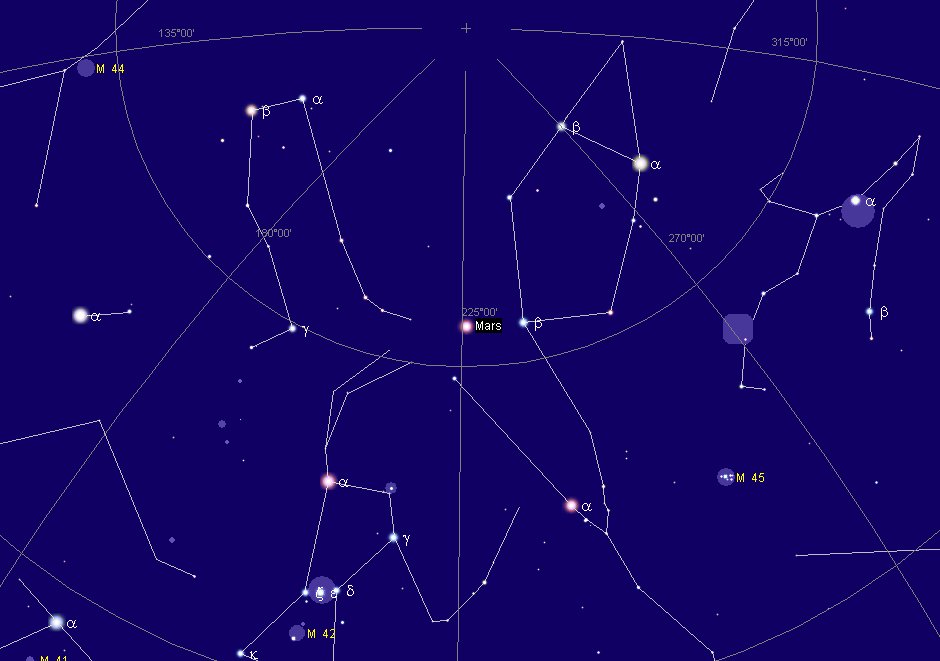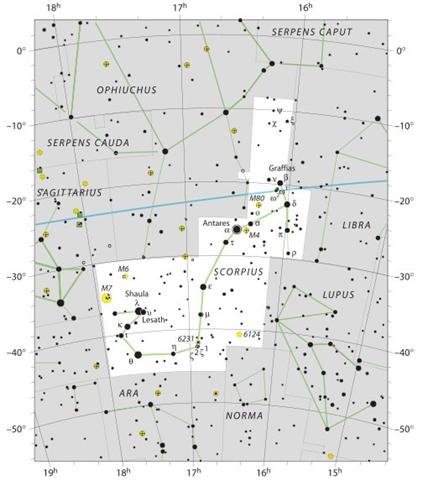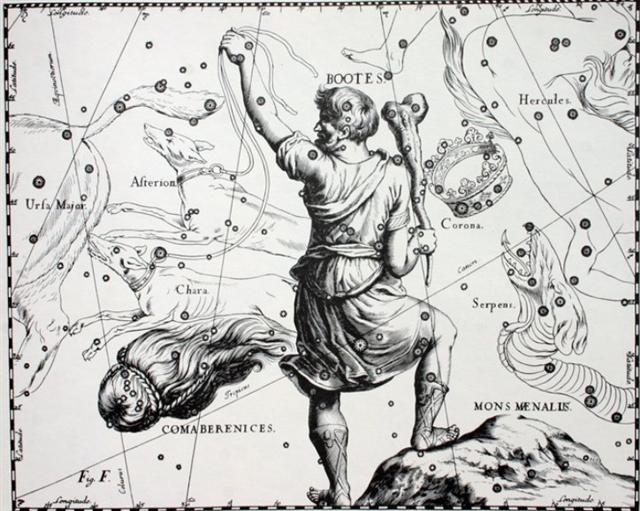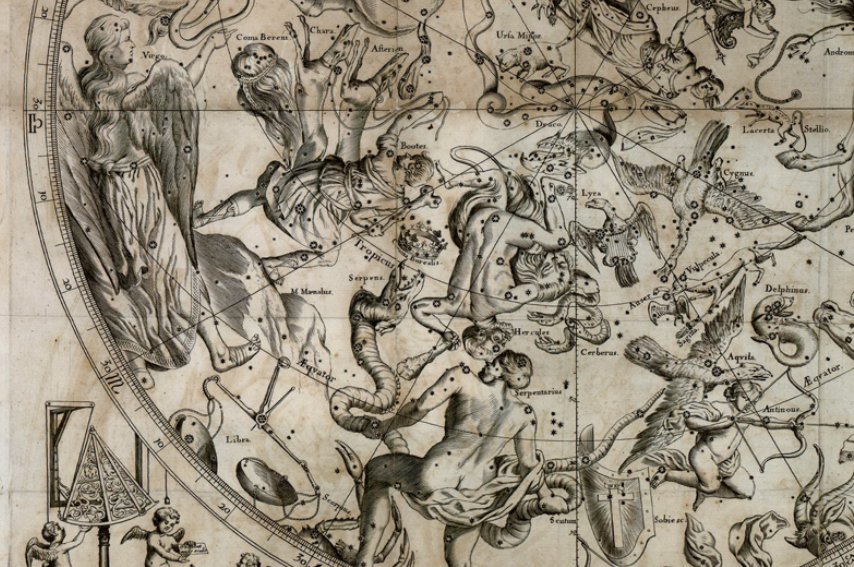37. Hevelius evidently thought it necessary to depict the Serpent Carrier with his left leg standing upon the Scorpion: 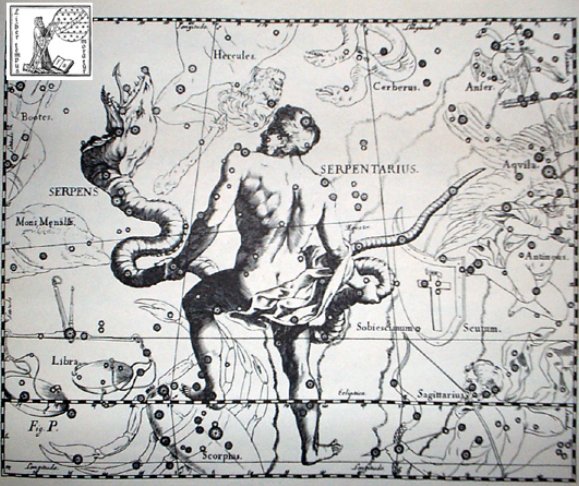 In a way it illustrates the necessity of going from the descended curve of the ecliptic up to the celestial equator - where the Serpent Carrier originally had been standing. Hevelius has drawn his left foot on top of the Scorpion and here the atumn equinox had been in the Golden Age of the Bull. As a confirmation of this interpretation his horizontal line is stated to be the Equator, the baseline.  At the same time Hevelius illustrated a further level above the Serpent Carrier, viz. the upside down Hercules: 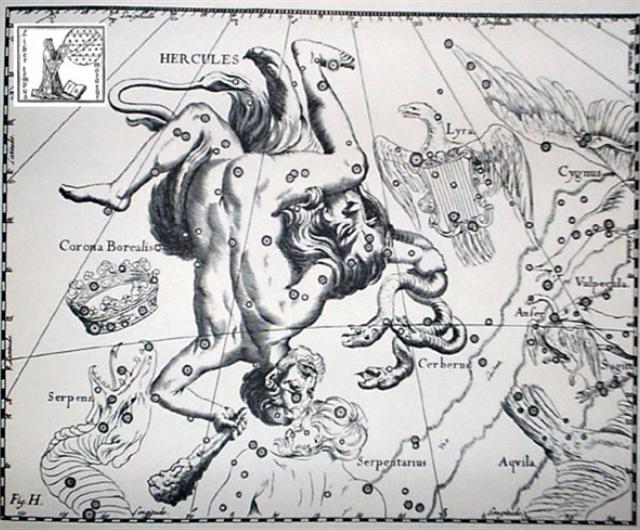  The Club of the inverted Hercules (Cujam, ε, *256.9, Dec 2, 4 * 84) and Kajam (*248.3, ω, SEPT 21, 264) could be referring to the Club of Orion (ξ, *92.5): 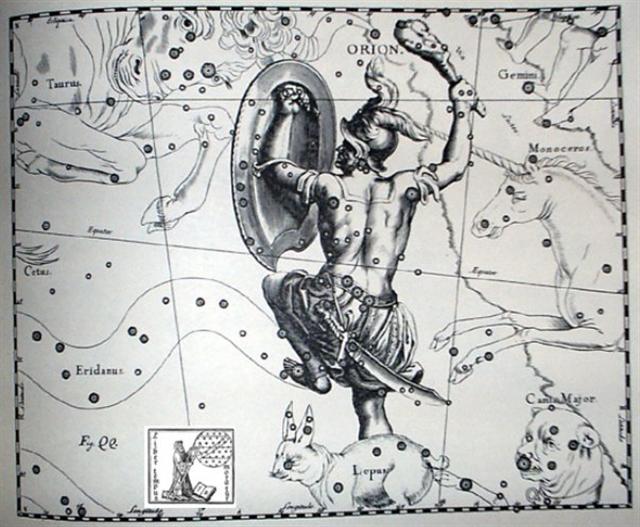
And, we remember, the Orion constellation was below the ecliptic:  ... The last of these stars to rise in the 17th hour (ε) has the same name as ω, viz. Kajam, but in order to distinguish between them I named it Cujam (the name Kajam already having been used for ω in my astronomy book): 'ω, a 4th magnitude double, by some early transcriber's error, is now given as Cujam, from Caiam, the accusative of Caia, the word used by Horace for the Club of Hercules, which is marked by this star. Gaiam, Guiam, and Guyam, frequently seen, are erroneous. In Burritt's Atlas the star is wrongly placed within the uplifted right arm. The Club of Hercules is supposed to have been a separate constellation with Pliny ... There were 3 levels also at that place, because above Orion (level 1) and the ecliptic (level 2) was Auriga (level 3): 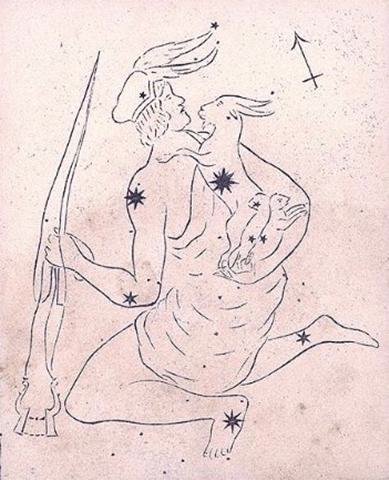 This fact might have been one of several reasons for the name Hermes Trismegistos (Thrice-mighty Mercury): ... That there is a whirlpool in the sky is well known, it is most probably the essential one, and it is precisely located. It is a group of stars so named (zalos) at the foot of Orion, close to Rigel (beta Orionis, Rigel being the Arabic word for 'foot'), the degree of which was called 'death', according to Hermes Trismegistos, whereas the Maori claim outright that Rigel marked the way to Hades (Castor indicating the primordial homeland) ... Between the northern spring equinox and autumn equinox, according to the Golden Time of the Bull, was the summer year with a high daytime sky,
i.e. from Orion / Taurus / Auriga, which constellations could be clearly seen in the winter nights, to Scorpius / Ophiuchus / Hercules.
These 3 levels could have motivated the way in which the Virgo constellation was constructed, with 3 branches evolving from Porrima (*191):
And then, at the head of the Scorpion, there were 3 stars converging on Antares (*249 → 191 + 2 * 29):
We should also recall Bootes, he too brandishing a Club, but climbing up with his right leg:
... Mons Maenalus, at the feet of Bo÷tes, was formed by Hevelius, and published in his Firmamentum Sobiescianum; this title coinciding with those of neighboring stellar groups bearing Arcadian names. It is sometimes, although incorrectly, given as Mons Menelaus, - perhaps, as Smyth suggested, after the Alexandrian astronomer referred to by Ptolemy and Plutarch. The Germans know it as the Berg Menalus; and the Italians as Menalo. Landseer has a striking representation of the Husbandsman, as he styles Bo÷tes, with sickle and staff, standing on this constellation figure. A possible explanation of its origin may be found in what Hewitt writes in his Essays on the Ruling Races of Prehistoric Times: The Sun-god thence climbed up the mother-mountain of the Kushika race as the constellation Hercules, who is depicted in the old traditional pictorial astronomy as climbing painfully up the hill to reach the constellation of the Tortoise, now called Lyra, and thus attain the polar star Vega, which was the polar star from 10000 to 8000 B.C. May not this modern companion constellation, Mons Maenalus, be from a recollection of this early Hindu conception of our Hercules transferred to the adjacent Bootes? Possibly the idea of Hevelius was to visualize a pair (2), one on each side of Libra, in contrast to the single Orion:
|
||||||||||||||||


